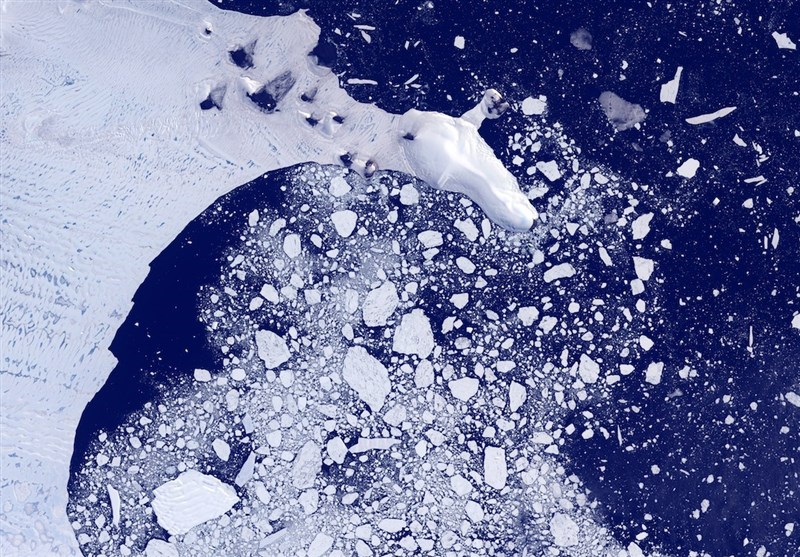Antarctic Sea Ice Collapse Rises Potential of 10-Foot Sea Level Rise: Study
TEHRAN (Tasnim) - A new study shows that Antarctic sea ice collapse greatly raises the risk of a 10-foot sea level rise this century if the US climate policies aren’t quickly reversed.
Warming ocean waters drove a 6-fold increase in annual ice mass loss from the Antarctic ice sheet between 1979 and 2017, according to a new study in the Proceedings of the National Academy of Sciences.
It’s been known for a while that the West Antarctic Ice Sheet (WAIS) was unstable and collapsing at an accelerating rate due to global warming. But the new study finds that parts of the vastly larger East Antarctic Ice Sheet (EAIS) are also disintegrating, Think Progress reported.
While the WAIS contains enough ice to raise sea levels some 20 feet, the EAIS contains enough ice to ultimately raise sea levels 170 feet. Although a complete melting of the Antarctic ice sheet will take many centuries, the new study suggests devastating sea level rise in this century
East Antarctica’s melting “increases the risk of multiple meter (more than 10 feet) sea level rise over the next century or so,” lead author Eric Rignot told the AP. Rignot is a senior project scientist at NASA’s Jet Propulsion Laboratory.
And even just half that level of sea rise means the destruction of every major coastal city in the nation and the world. With just 6 feet of sea level rise, for instance, the southern tip of Florida would be underwater.
This four-decade speed up in ice loss is being driven by global warming. As the study notes, “During the entire period, the mass loss concentrated in areas closest to warm, salty, subsurface, circumpolar deep water (CDW).”
So the greatest sea ice loss is precisely where the deep water surrounding Antarctica is warming up the most.
The amount of sea ice loss — and the rate of speed up — is staggering. “Between 1979 and 1990, Antarctica shed an average of 40 gigatons of ice mass annually. (A gigaton is 1 billion tons.),” the news release explains. But “from 2009 to 2017, about 252 gigatons per year were lost” — a six-fold increase.
The study warns that sea level rise (SLR) will continue to speed up as the ocean continues to warm. And as ThinkProgress reported last week, a different study concluded “ocean warming is accelerating.”
The latest findings suggest that more and more of the EAIS could get exposed to warming ocean water — “and could contribute multimeter SLR with unabated climate warming.”
Tragically “unabated climate warming” is the primary policy of the Trump administration.
The Trump’s team has worked tirelessly to gut domestic US climate regulations while becoming the only major country to start the process of withdrawing from the 2015 Paris Climate Accord. So, as the study’s findings warn, the time to save our coastal cities is running out rapidly.
But averting that unimaginable catastrophe will require going far beyond reversing Trump’s policies. The world will also have to take global carbon dioxide emissions to near zero by early in the second half of the century.






